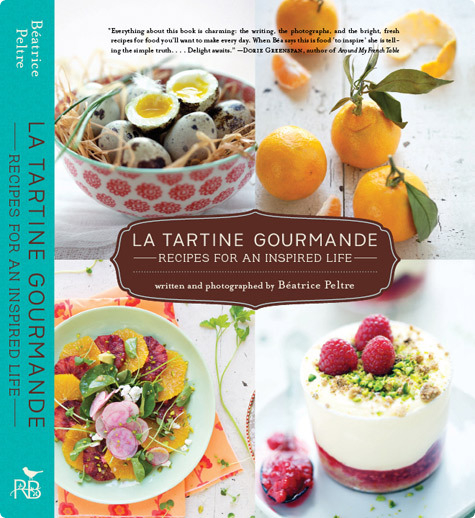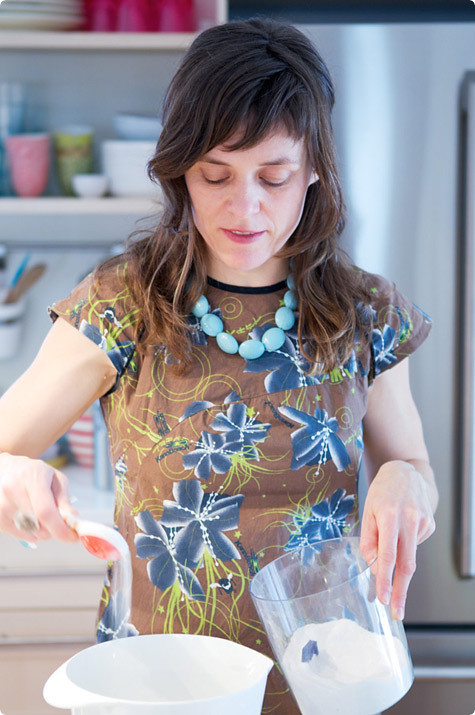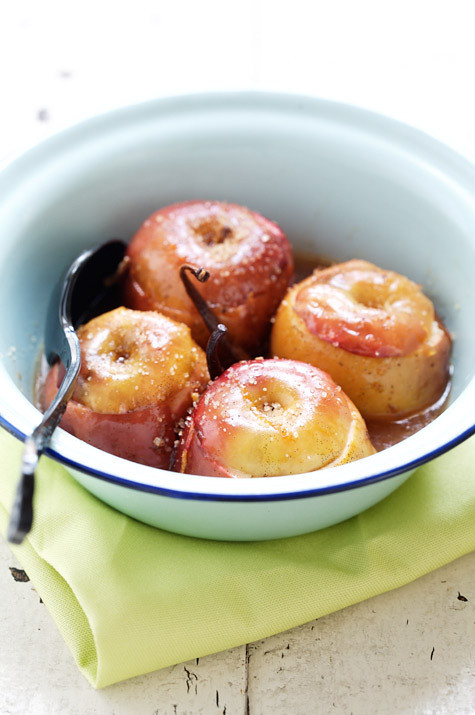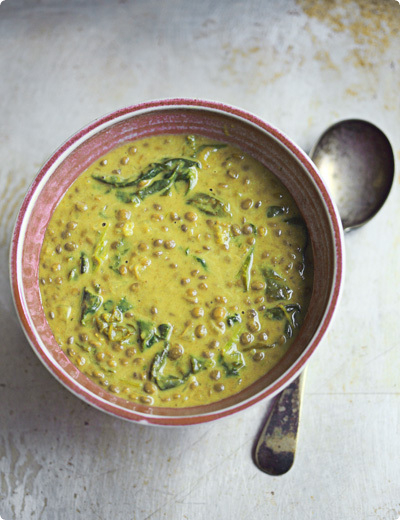 Soft-as-Silk Cauliflower with Crispy Garlic and Anchovy-Caper Mayonnaise
Soft-as-Silk Cauliflower with Crispy Garlic and Anchovy-Caper Mayonnaise
I suspect today’s recipe is going to be a hard sell.
It offers no exotic ingredients, unusual spices or trendy cooking methods à la sous vide. It contains no pasta, cheese or chocolate, and hasn’t been culled from the pages of the latest celebrity food tome. It’s not even very visually appealing, essentially consisting of various shades of beige. And it that weren’t bad enough, the things it does feature are firmly entrenched at the top of many people’s ‘most-detested’ lists: anchovies, mayonnaise, cauliflower, and a pot of boiling water as the main cooking medium.
Before you click away in horror, though, I implore you to hear me out. As unpromising as this sounds, these humble components together are responsible for one of the most delicious meals I’ve eaten in months. Yes, months. We ate it for dinner four nights ago, and again last night. And I’m telling you, I’d make it again tonight if I had the ingredients in the house.
It started, actually, with a Proustian moment. I was sautéing garlic in olive oil a week or so ago when out of nowhere a long-buried memory of a dish I hadn’t eaten in seventeen years bubbled to the surface, and suddenly, I could think of nothing else.
The dish in question was a simple cauliflower preparation my host mother Clari used to make during the year I lived in Spain. I’ve mentioned before that she was a great cook, and she was, though in my youthful ignorance I didn’t always appreciate her food as much as I should have. This dish was a case in point.
You see, she tended to prepare vegetables in one of two ways: fried or boiled. The ones that could be easily sliced were floured and fried. Everything else was boiled until it had nearly disintegrated, then dressed with a slick of olive oil in which a clove or two of garlic had been crisped. It doesn’t sound very delicious, but it actually was, since she wasn’t shy with the amount of salt she used in the boiling water nor the quantity of oil she slipped over the top just before serving.
The most delicious of all was her cauliflower. This she would simmer until it was so soft it almost melted onto your tongue, and like her other boiled fare it was showered with copious amounts of garlic-flecked oil. The coup de grâce for this vegetable, though, was the dish of thick homemade mayonnaise she served alongside, a dollop of which turned a plate of what could have been the drabbest of vegetables into something scandalously decadent.
The problem was that I was scandalized. After all, that this was the 90s and I was a teenager. Fat in all its forms was the dietary devil, and regardless of how good Clari’s vegetables tasted, I could not wrap my head around eating them drenched in the stuff. To my mind oil was something that should be used in the smallest quantities necessary to lubricate a pan before sautéing, and mayonnaise (which in my US house was consumed in its ‘light’ variety only) belonged spread as thinly as possible on one side of a sandwich. I couldn’t conceive of either of these being used as a sauce, for heaven’s sake, and as a result I ate her vegetables with as much restraint as I could muster (and made up the difference with lots of bread—is it any wonder the scale still inched steadily upwards?). When I finally left Spain, a couple dozen pounds heavier than when I’d arrived, I breathed a sigh of relief and thanked the heavens I’d finally be able to eat my vegetables in low-fat, appropriately virtuous preparations again.
Fast forward seventeen years. Luckily with age comes wisdom, and I’ve now made friends with fat in most of its forms, as well as come to the realization that perhaps Clari had the right idea all along: vegetables deserve to taste good, even if it means they’re a little less virtuous. Still, though, I never once found myself tempted to fill my biggest pot with water and toss in the contents of my crisper drawer. My logic was this: why boil when you can roast, grill, sauté, braise or stew?
Not anymore. Thanks to a chance craving for a long-forgotten plate of cauliflower, I’m officially a born-again vegetable boiler. Well, at least where this dish is concerned, and once you try I can all but guarantee you’ll be too. It takes Clari’s humble preparation and does it one better, pairing the silky, slurpy cauliflower with a punchy anchovy-caper mayonnaise so good I have to fight the urge to spoon it straight into my mouth while the cauliflower cooks. It’s worth resisting the urge, though, because it’s in the contrasts that the dish’s magic happens: hot and cold, crunchy and soft, bland and sharp, lean and rich. And what I love best is how its sheer deliciousness is completely at odds with the effort involved to make it—particularly if you enjoy it like we do as a one-dish meal with nothing but a loaf of a good crusty bread alongside, from start to finish you’ll have clocked up less than half an hour. What sous-vide recipe can you say that about?
Soft-as-Silk Cauliflower with Crispy Garlic and Anchovy-Caper Mayonnaise
If you were so inclined, you could probably cut up to half the mayonnaise with something a little leaner, such as sour cream. Don’t try to make it too healthy, though, or you’ll miss the contrasts that make this dish so sublime. Oh, and if those anchovies are scaring you off, don’t let them: they’re not fishy at all in this form, just pure umami. That said, for an anchovy-free option you might try a little miso instead.
Serves: 2 as a main course, or a couple more as a side dish
1 large head cauliflower, separated into bite-sized florets
salt
2-3 tablespoons olive oil
2 fat cloves garlic, thinly sliced
for mayonnaise:
1/2 cup (125ml) mayonnaise
1 tablespoon olive oil
2-3 oil-packed anchovy filets
2 tablespoons capers in brine, drained
squeeze of lemon juice
chopped parsley, for garnish (optional, for a bit of color)
For the mayonnaise, combine all the ingredients in a bowl and blitz with a hand blender until more or less smooth (or use a mini chopper, or even a regular blender). Adjust the lemon to taste. Set aside to let the flavors mingle.
Combine the cauliflower, 2 quarts (liters) water and 2 tablespoons salt in a pot and bring to a boil. Cover, turn down the heat and let bubble away until the cauliflower has lost all trace of firmness and a fork slides into even the largest piece without resistance, but before it’s started to disintegrate (although slightly disintegrated is better than too firm in this instance). This will probably take 15-20 minutes.
Meanwhile, heat the olive oil in a small skillet over medium heat and gently fry the garlic, stirring often, until pale gold. Remove from the heat.
When the cauliflower is done, drain well and divide between your plates. Drizzle a little garlic oil (including crispy garlic bits) over each, and top with a dollop of mayonnaise. Serve immediately, mashing the cauliflower into the oil and mayonnaise, and sopping up the juices with your favorite crusty, chewy bread.




